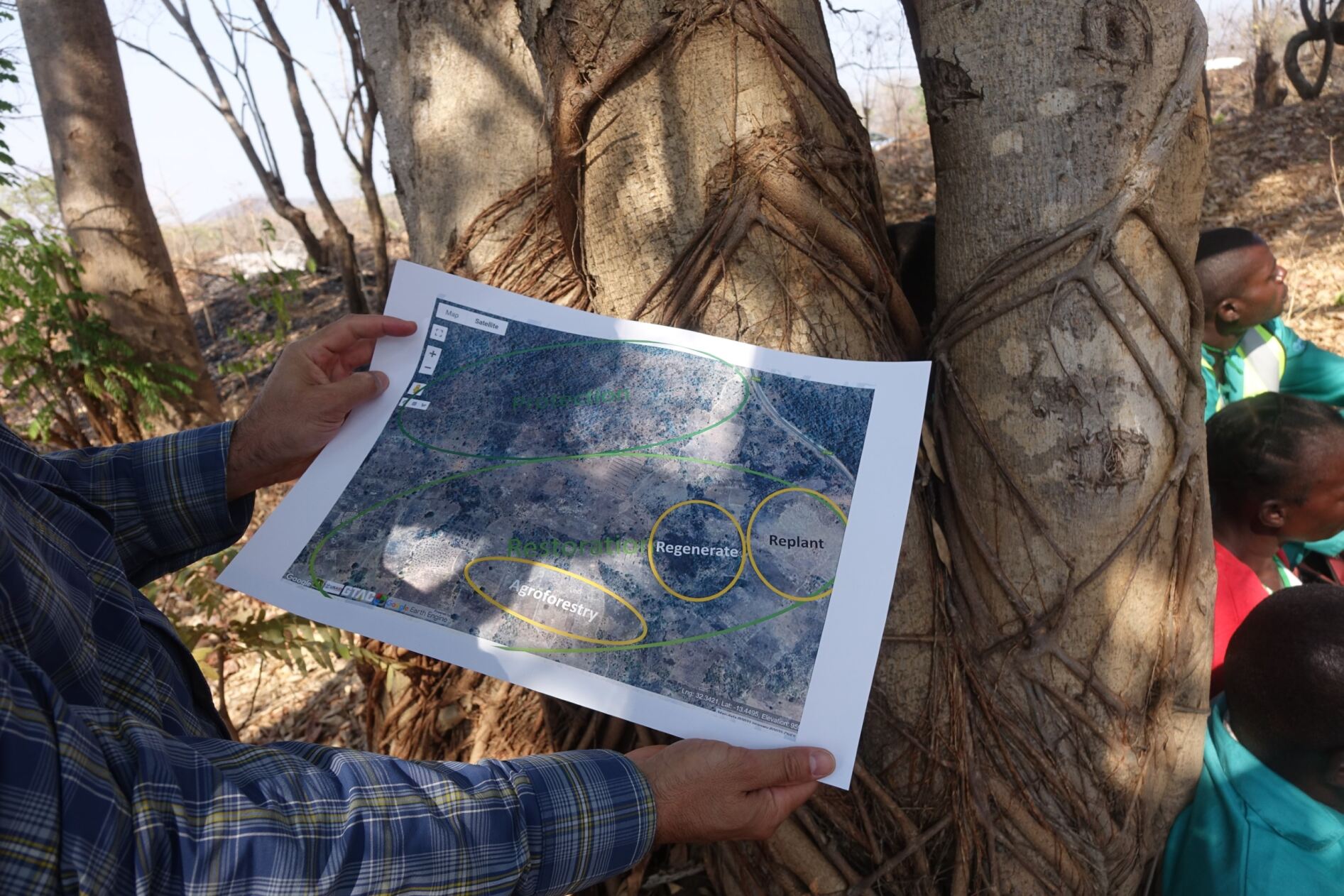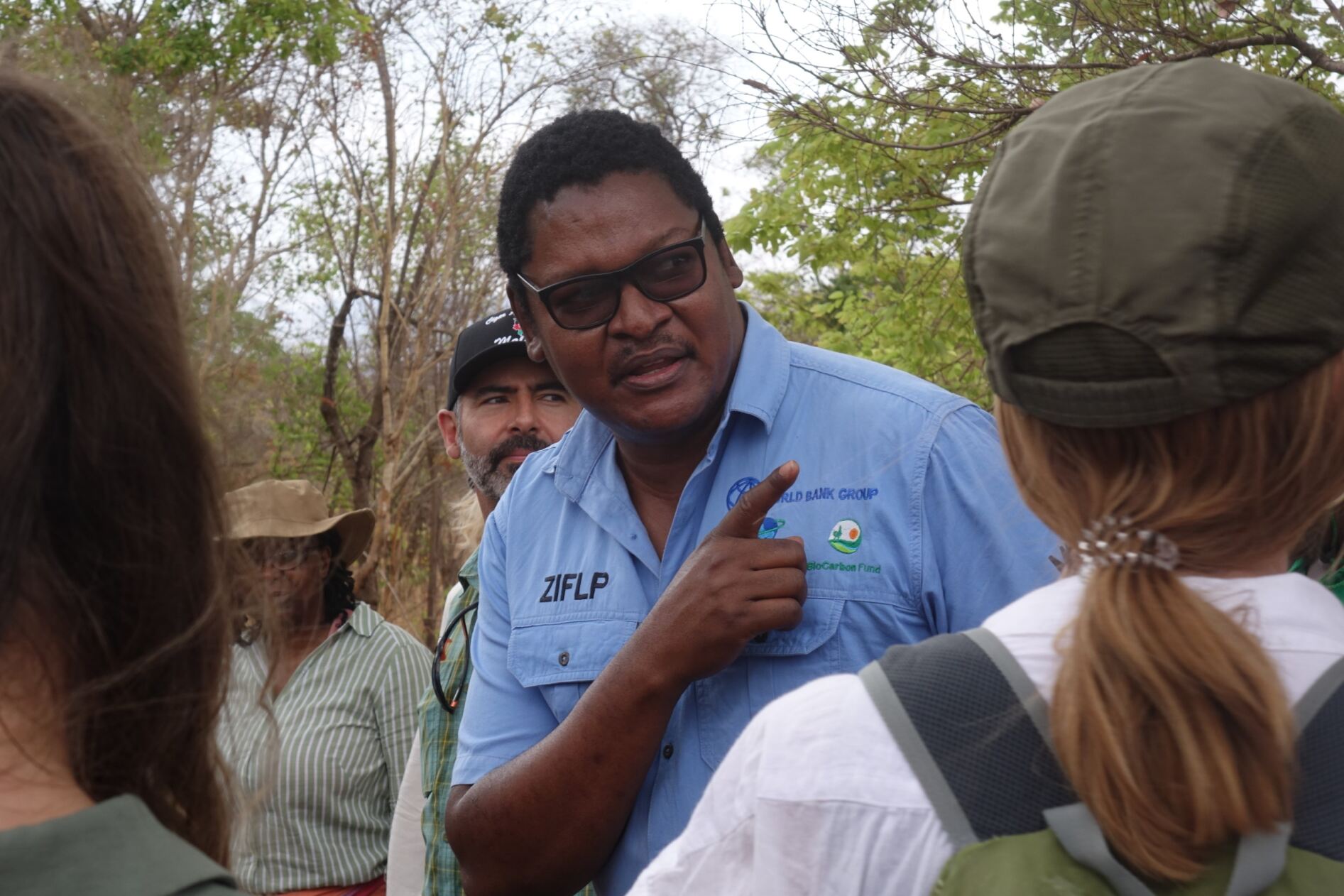An innovative program in Zambia is demonstrating that it is possible to restore forests, improve soil health, reduce emissions, and adapt to climate change, all while reducing poverty and improving the livelihoods of the most vulnerable populations. The Zambia Integrated Forest Landscape Project (ZIFLP), financed by the World Bank, and led by Zambia's Ministry of Green Economy, uses carbon finance to incentivize the adoption of climate smart agriculture (CSA). It's a shining example of how integrated land-use planning can transform degraded lands into vibrant forests while benefiting the communities who live and work in the area.
Highlights
-
A partnership between the Zambian Government and World Bank Group uses carbon payments to promote sustainable agriculture
-
The new program demonstrates it's possible to restore forests, reduce emissions, and improve the livelihoods of vulnerable populations
-
Depending on the level of international support it receives, Zambia is on track to reduce its greenhouse gas emissions by 25 to 47 percent through integrated land-use planning
Inclusive Solutions
Zambia, like many countries across the globe, has seen an increase in both droughts and flooding due to climate change. In the country's Eastern Province, poor farming practices contribute to declining soil fertility and result in the clearing of forests as farmers expand and seek better land. The clearing of trees for agricultural expansion exacerbates climate change, which then causes more unpredictable weather. It is a vicious cycle.
An innovative new program in Zambia is demonstrating that it is possible to restore forests, improve soil health, reduce emissions, and adapt to climate change, all while reducing poverty and improving the livelihoods of the most vulnerable populations. The Zambia Integrated Forest Landscape Project (ZIFLP), financed by the World Bank (IDA $17 million), Global Environment Facility ($8.05 million), and the BioCarbon Fund Initiative for Sustainable Forest Landscapes (ISFL $7.75 million), and led by Zambia's Ministry of Green Economy, uses carbon finance to incentivize the adoption of climate smart agriculture (CSA). It's a shining example of how integrated land-use planning can transform degraded lands into vibrant forests while benefiting the communities who live and work in the area.

Adapting to new agricultural practices can create new burdens for Zambia's farmers, the majority of whom are subsistence farmers struggling to maintain a living. This is where integrated land-use planning comes into play. This land management approach looks at the situation holistically, considering ecosystems, human settlements, transportation, and economic production to find land-management practices that benefit all stakeholders. In Zambia, this means including climate-smart agriculture (CSA) in plans to restore forests and reduce emissions. CSA uses techniques like precision farming, agroforestry, crop rotation, crop diversification, and efficient irrigation to optimize resource use, minimize emissions, and store carbon in the soil. By including CSA in the baseline of EP-JSLP, emission reductions payments can flow through to the farmers, meaning the populations most vulnerable to climate change benefit from adaptation and mitigation as well as new income streams through carbon credits and a Benefit Sharing Program (BSP).

To enable smallholder farmers to reap the benefits of carbon finance, Zambia’s Eastern Province Jurisdictional Sustainable Landscape Program integrated CSA into the Program's monitoring reporting and verification (MRV) system through a novel modeling technique combining climate, soil, and land management data to estimate the turnover of organic carbon in the soil. The soil's organic carbon baseline was established using data from 2009—2018. The baseline generated emission factors will be compared against soil carbon sequestration resulting from the adoption of CSA interventions including minimum tillage, improved crop varieties, integrated nutrient management, and implementation of crop rotations and cover crops. The carbon savings will result in payments to the farmers through a benefit sharing plan.
The result is more farmers in the Eastern Province are signing on to these practices. Under the Program's implementation plan, CSA is expected to be adopted by 150,000 farmers, increasing the land area under CSA from 174,000 hectares in 2020 to 311,000 hectares in 2029. To build capacity, the Program trains extension officers to implement the new techniques. The extension officers then train lead farmers elected by the community who then train follower farmers in CSA technologies and practices.
Tangible Results
By using integrated land-use planning that includes climate-smart agriculture, Zambia is on track to reduce its greenhouse gas emissions by 25 to 47 percent, depending on the level of international support it receives. The program demonstrates that climate mitigation and socioeconomic development can be simultaneously achieved through active participation of local communities and other stakeholders. Zambia is incentivizing farmers to take part in agricultural practices they might otherwise not have adopted, generating income for smallholder farmer communities, and facilitating climate adaptation. This holistic approach holds the key to a sustainable future for Zambia and beyond.

(i) This blog is part of a World Bank knowledge series on integrated land use, in partnership with PROGREEN and the BioCarbon Fund Initiative for Sustainable Forest Landscapes (ISFL). Integrated land-use initiatives consider both the natural and human systems that depend on them and give rise to programs which recognize the interrelatedness between different sectors. This approach is a key to finding sustainable ways to manage multiple land uses across landscapes,
(ii) To ensure effective implementation, the Zambia Integrated Forest Landscape Project embraces eight essential themes of integrated land use planning. These themes act as guiding principles, shaping the program's strategies and actions. Integrated land use planning prioritizes land tenure security, sets boundaries for sustainable land use, explores financing strategies, and establishes robust monitoring, evaluation, and learning systems. By interweaving these essential themes into the fabric of the program, the Zambia Integrated Forest Landscape initiative provides a strong example of how integrated land-use planning can drive transformative change. Other countries and initiatives can draw valuable lessons from this case study.
(iii) To learn more about how integrated land-use initiatives play a key role in a more sustainable future, register for our new e-course, "Integrated Land-Use Initiatives: Theory and Practice," now available on the World Bank's Open Learning Campus.
By Ademola Braimoh, Senior Natural Resources Management Specialist, Agriculture Global Practice, World Bank
Photo credits: Jillian Di Persio, World Bank
